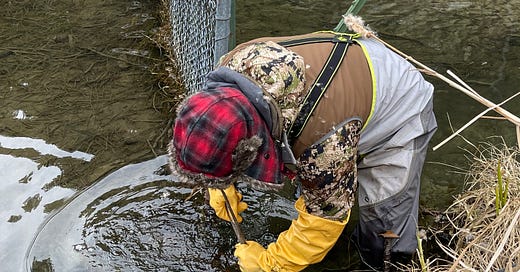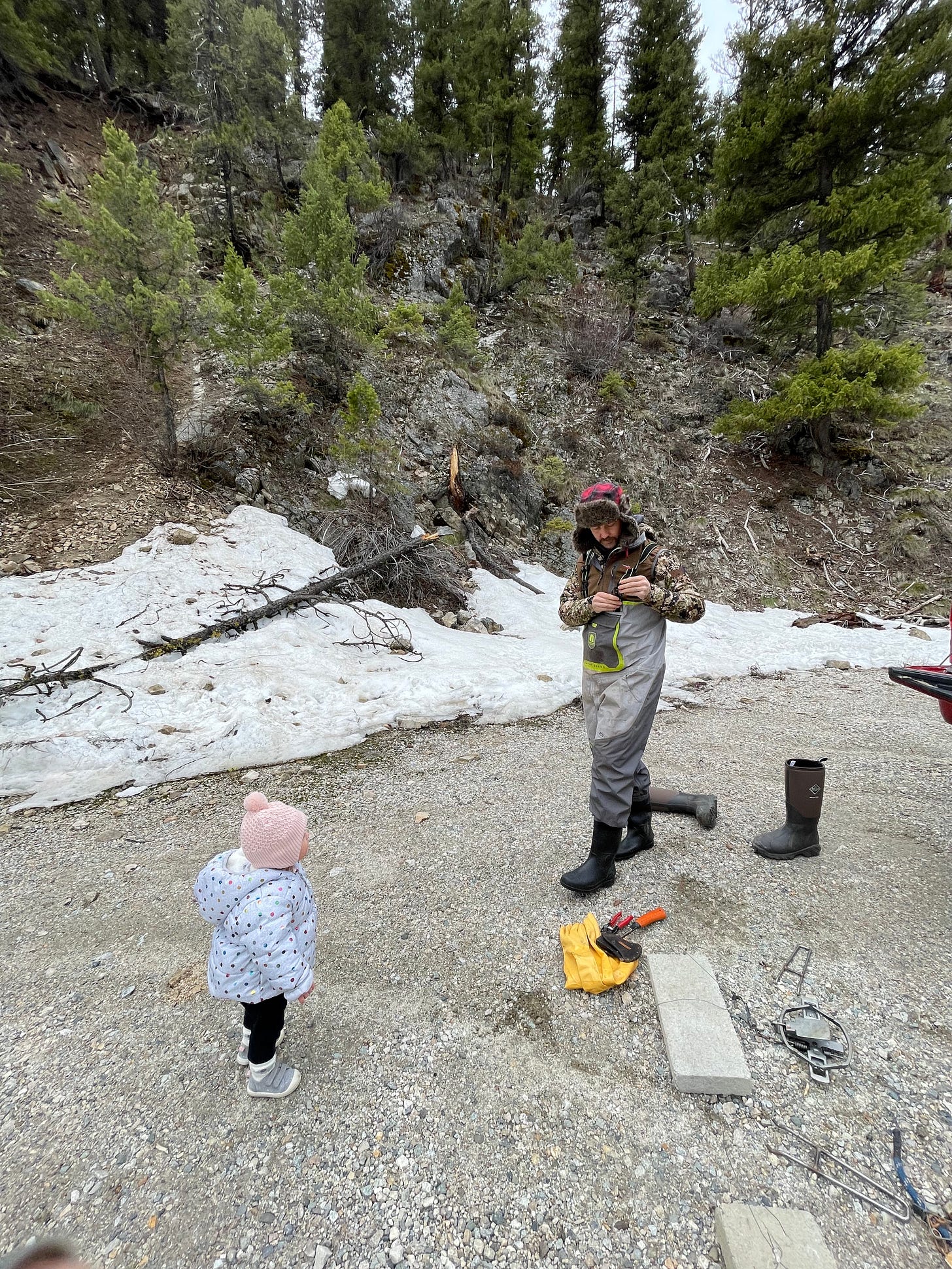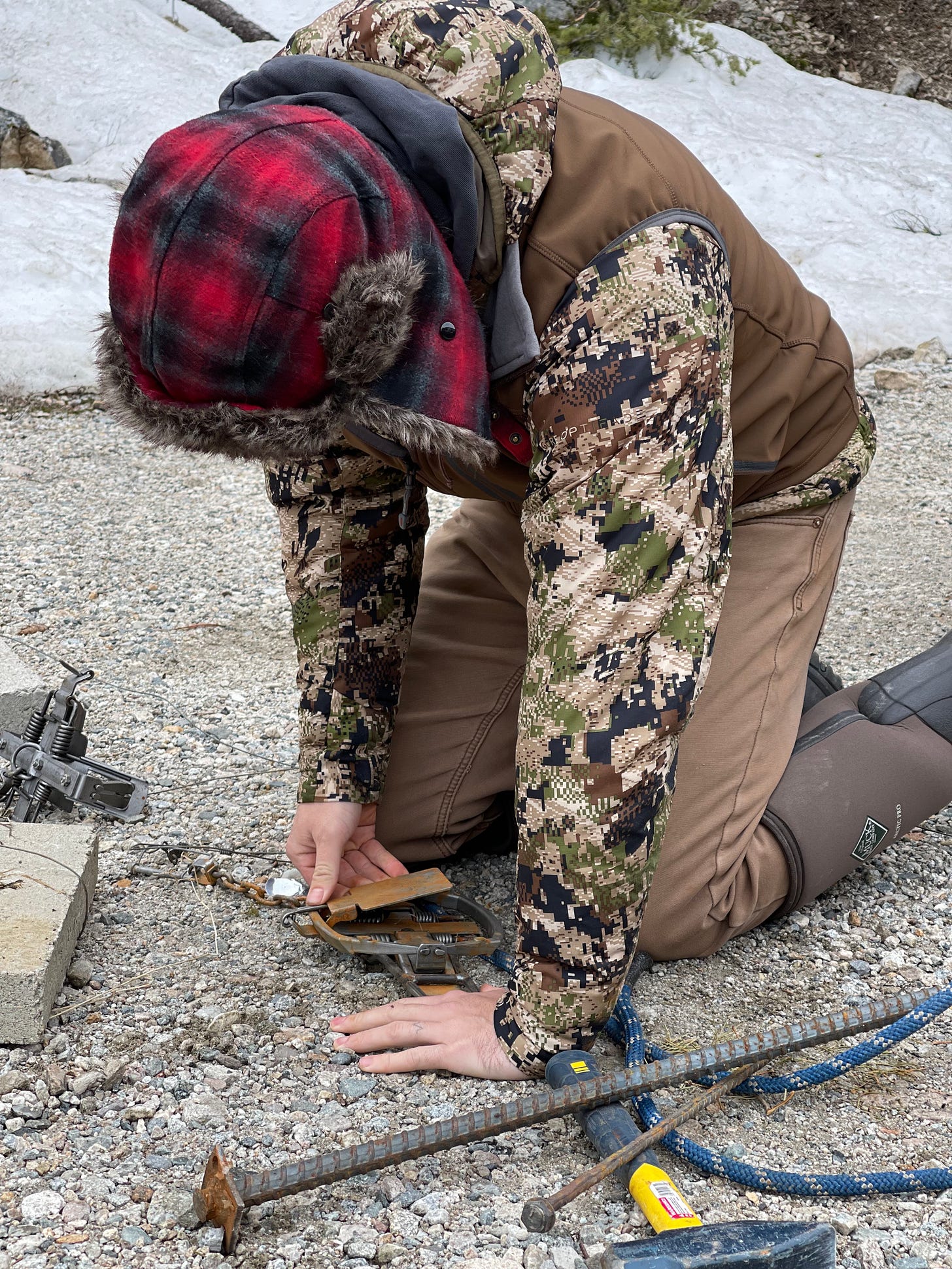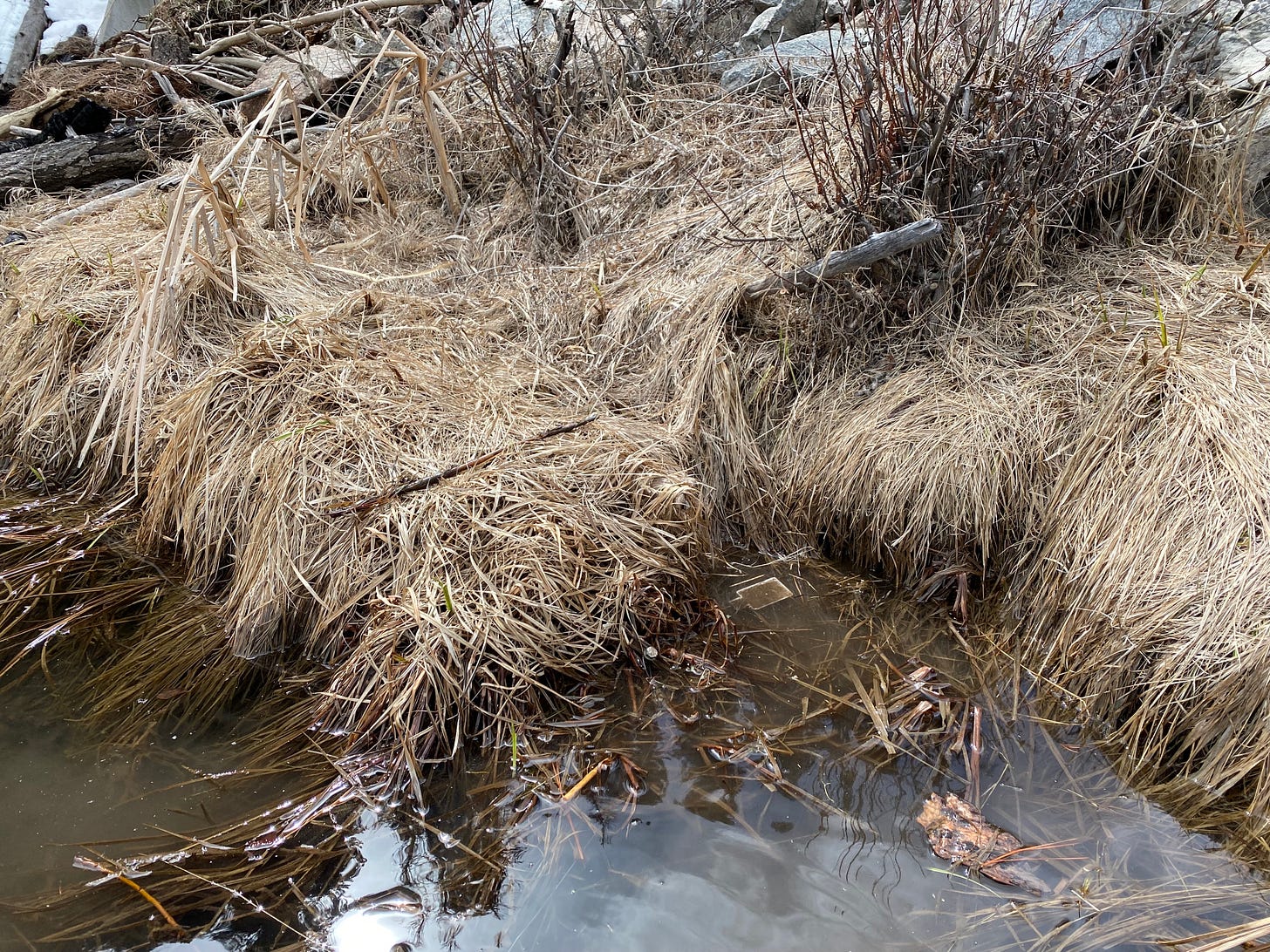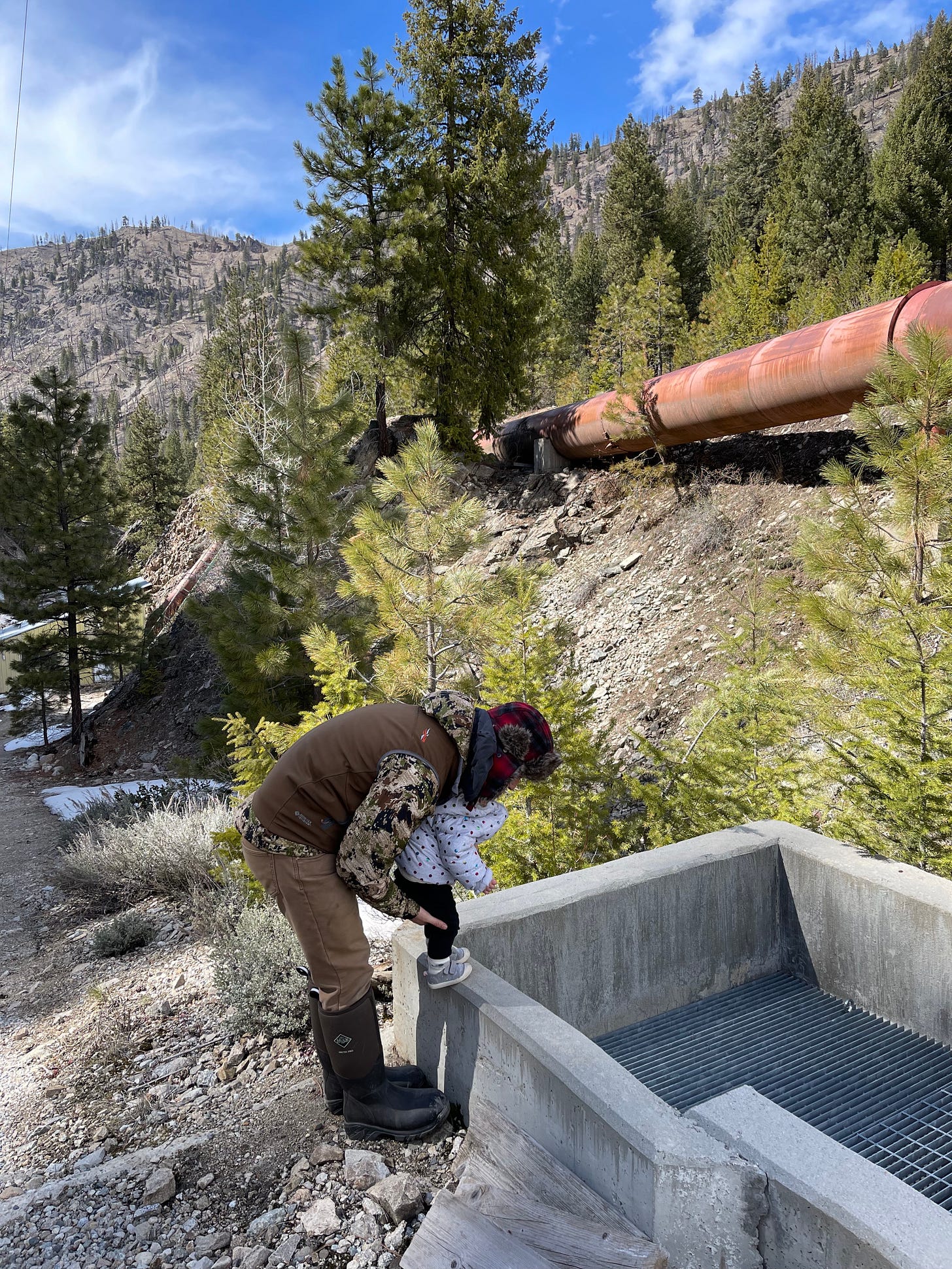Full disclosure... Since I last went trapping for nuisance beaver two weeks ago I haven’t been back out. I would say that I had tons of excuses, but the fact is I should have been out there setting traps and I wasn’t. It actually took one of our local friends, who happens to be the guardian of our town dam’s fish ladder, coming to ask for help to light the fire under my butt to get back out into the cold water.
What our friend had told us was that beaver had been down near the entrance of our fish ladder and had successfully clogged up the entrance several times in the past week, which required manual removal of debris to allow for the trout to once again get in and out.
Though this is a big problem for our fish, what’s even crazier is that when the beaver block the fish ladder entrance, there is actually a visible reduction in water volume in the reservoir sixty-eight miles down river... the same reservoir and dam that powers a large chunk of the greater Boise metropolitan area. Talk about inception — a handful of beaver affecting the reliability of power for a booming population... and those folks don’t even know that this is going on deep in the woods above them.
Anyhoo — putting aside the fun thought experiments, I packed my wife, daughter, and supplies up and we made our way to the scene of the crime(s) and got ready to set out some traps in hopes of snagging a few of the aquatic pests. With my daughter on point to make sure I didn’t forget anything, I laid out the two foothold traps and two conibears that I planned to use.
Near the fish ladder there was a small wire gate that is used as a debris guard, which has open channels on either side for fish to swim through. I figured I would put two conibears, or body-gripping traps, on either side of the water flow, as well as two foothold traps in nearby areas where I found beaver slides (areas where beaver enter and exit the water) and fresh scat.
To get started I worked my way into the water to survey the area. I started by placing my first trap set between the bank and the existing debris gate. Using a rebar stake, I anchored the trap in the dirt and rigged some long sticks up to keep the trap in place. By the time I was done, there was only one entry point into the fish ladder wading pool that was large enough for a beaver — which happened to be through my trap (fish and other small animals had other options).
Once done, I worked on setting up my drowning wires at the beaver slides. I set my footholds on dry land and carried my trap, wire, and cement block down to the waters edge. I placed the block in about three feet of water and ran the wire and trap back up to the bank where I would be placing the foothold.
After anchoring the wire to the bank with a rebar stake I settled the trap into the mud in a space where I felt a beaver would step as they got out of the water. In general, a foothold trap on a drowning wire works like this... A beaver steps onto the trap with their back or front paw... the trap gets fired and holds onto their foot. Instinctively, the beaver dives into the water to swim away, but the wire allows the foothold device to travel only one direction — towards the cinder block. Therefore, it holds the beaver at the bottom of the pool of water and drowns them quickly and humanely.
After I was all done fixing my sets, I did the mundane but necessary task of placing a warning sign out for anyone who may come snooping around. As a trapper, our biggest fear is to get a non-target catch or accidentally ensnare an unsuspecting human or domestic pet... So, I always tend to be over-cautious with my signage and warnings.
After I crawled out of the water and put my tools away, my wife, daughter, and I spent some time walking the whole length of the fish ladder. It’s pretty amazing what engineering effort often goes into conservation of wildlife and we all found ourselves amazed as we sat and watched some small trout going through the flume. My daughter loved it and was giggling and pointing at the rushing water and shiny fish!
